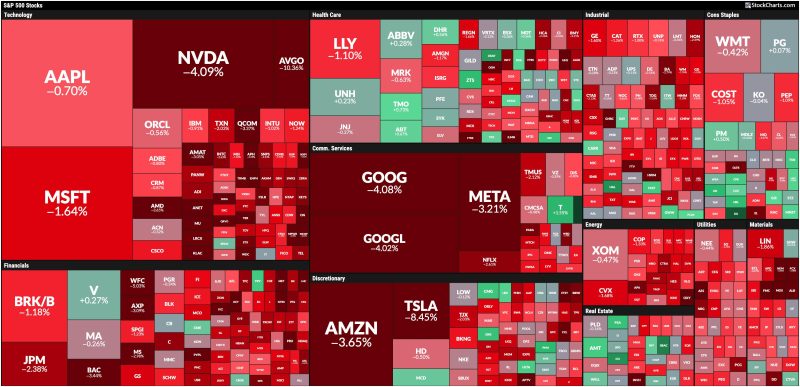Broad-Based Stock Market Selloff: How to Position Your Portfolio
Diversification Is Key
One of the most important principles to keep in mind during a broad-based stock market selloff is the importance of diversification. Diversifying your portfolio across different asset classes, industries, and geographies can help reduce risk and protect your investments during volatile market conditions. If you are heavily concentrated in a specific sector or individual stocks that are particularly vulnerable to market downturns, consider rebalancing your portfolio to spread out risk.
Consider Defensive Stocks
During a broad-based selloff, investors often flock to defensive stocks that are less sensitive to economic downturns. These can include companies that provide essential goods or services, such as utilities, healthcare, and consumer staples. While defensive stocks may not offer as much upside potential during bull markets, they can help cushion your portfolio from substantial losses during market declines.
Maintain a Long-Term Perspective
It’s crucial to remain focused on your long-term investment goals and not be swayed by short-term market fluctuations. While market selloffs can be unsettling, it’s essential to remember that they are a natural part of the market cycle. Trying to time the market or make drastic changes to your portfolio in response to short-term volatility can often do more harm than good. Instead, stick to your investment plan and stay disciplined during turbulent times.
Dollar-Cost Averaging
Another strategy to consider during a broad-based stock market selloff is dollar-cost averaging. Instead of trying to time the market by making large lump-sum investments, dollar-cost averaging involves investing a fixed amount of money at regular intervals, regardless of market conditions. This approach can help reduce the impact of market volatility on your portfolio and allow you to take advantage of lower prices during a selloff.
Review and Rebalance Your Portfolio
Periodically reviewing and rebalancing your portfolio is essential, especially during a broad-based stock market selloff. Rebalancing involves selling assets that have become overweight in your portfolio and reinvesting the proceeds into assets that are underweight. This helps maintain your desired asset allocation and risk profile over time. By regularly assessing your portfolio and making adjustments as needed, you can ensure that your investments align with your long-term financial goals.
Seek Professional Advice
If you’re unsure how to position your portfolio during a broad-based stock market selloff, consider seeking advice from a financial advisor or investment professional. A professional can provide personalized guidance based on your individual financial situation, risk tolerance, and investment objectives. They can help you navigate market volatility, make informed decisions, and develop a strategy that aligns with your long-term financial goals.
In conclusion, navigating a broad-based stock market selloff requires a balanced approach that considers diversification, defensive stocks, a long-term perspective, dollar-cost averaging, portfolio rebalancing, and professional advice. By following these strategies and staying disciplined during turbulent times, you can position your portfolio to weather market volatility and achieve your investment objectives in the long run.
Reference:
Godzilla Newz. Broad-Based Stock Market Selloff: How to Position Your Portfolio. (https://godzillanewz.com/broad-based-stock-market-selloff-how-to-position-your-portfolio/)

























